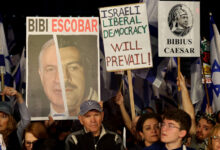
Bold Dragon exercises are aimed at getting the newly-arrived alliance servicemen train on Estonia’s terrain

Troops from NATO Battlegroup Estonia participate in the Bold Dragon exercise. © Estonia’s Defense Ministry
British, French, and Danish troops who recently arrived to serve in NATO Battlegroup Estonia began joint drills with Estonian forces this weekend.
The ongoing Bold Dragon exercises, involving the foreign troops and members of Estonia’s 1st Infantry Brigade, are being held at the Estonian military’s central training area in the north of the Baltic state.
Their aim is to provide the newly-arrived Western European servicemen with their first opportunity to get acquainted with the Estonian terrain and improve their cooperation with their local counterparts.
On Saturday and Sunday, the participants of the drill practiced both assault and defensive maneuvers, according to a statement by the 1st Infantry Brigade. Some 2,000 Estonian troops are taking part in the war games, which will culminate in a battalion-level tactical exercise on Wednesday and Thursday, it added.


© Estonia’s Defense Ministry
The Bold Dragon drills also feature aviation, including Belgian F-16s, British Eurofighter jets and Wildcat helicopters as well as Estonian aircraft.
“In the days to come, each subunit of the battlegroup – from the UK, Denmark as well as France – will show what they are capable of, with the goal of integrating into the 1st Infantry Battalion as an efficient military unit,” Lieutenant Colonel Ru Streatfeild, commander of NATO Battlegroup Estonia, said.


© Estonia’s Defense Ministry
The drills are taking part amid the ongoing Russian military operation in Ukraine. Estonia, which joined NATO in 2004 together with Baltic neighbors Latvia and Lithuania, shares a 300-km (over 186 miles) border with Russia.
Since the start of the conflict, NATO has significantly boosted its contingent in Eastern Europe, with the number of the bloc’s troops in the region – stretching from the Baltic to the Black Sea – now reaching some 40,000.


© Estonia’s Defense Ministry
Russia attacked its neighbor in late February, following Ukraine’s failure to implement the terms of the Minsk agreements signed in 2014, and Russia’s eventual recognition of the Donbass republics in Donetsk and Lugansk. The German and French brokered protocols had been designed to regularize the status of those regions within the Ukrainian state.
READ MORE:
Russia expels Baltic diplomats
Russia has now demanded that Ukraine officially declare itself a neutral country that will never join the US-led NATO military bloc. Kiev insists the Russian offensive was completely unprovoked and has denied claims it was planning to retake the two republics by force.




